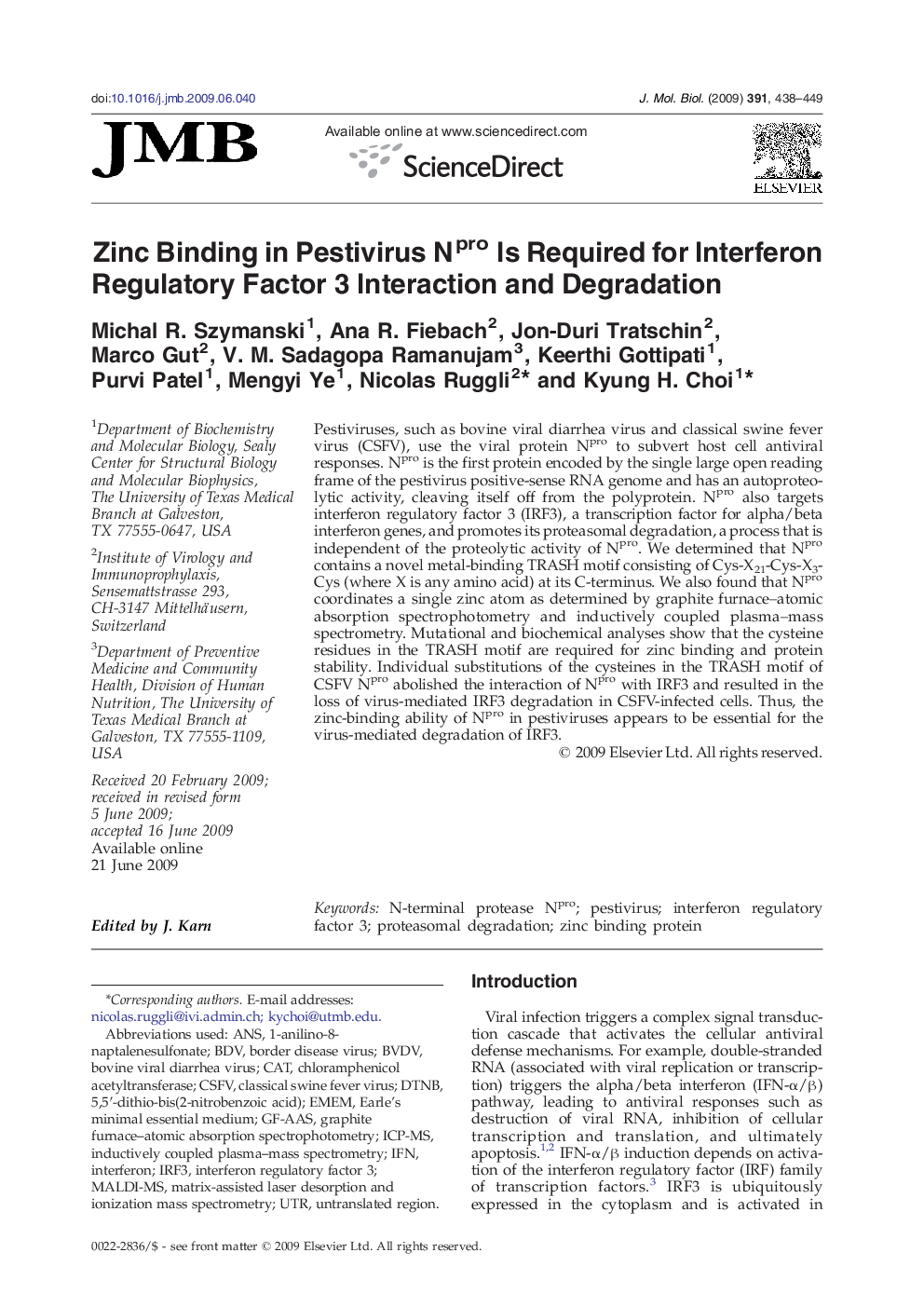| Article ID | Journal | Published Year | Pages | File Type |
|---|---|---|---|---|
| 2186441 | Journal of Molecular Biology | 2009 | 12 Pages |
Pestiviruses, such as bovine viral diarrhea virus and classical swine fever virus (CSFV), use the viral protein Npro to subvert host cell antiviral responses. Npro is the first protein encoded by the single large open reading frame of the pestivirus positive-sense RNA genome and has an autoproteolytic activity, cleaving itself off from the polyprotein. Npro also targets interferon regulatory factor 3 (IRF3), a transcription factor for alpha/beta interferon genes, and promotes its proteasomal degradation, a process that is independent of the proteolytic activity of Npro. We determined that Npro contains a novel metal-binding TRASH motif consisting of Cys-X21-Cys-X3-Cys (where X is any amino acid) at its C-terminus. We also found that Npro coordinates a single zinc atom as determined by graphite furnace–atomic absorption spectrophotometry and inductively coupled plasma–mass spectrometry. Mutational and biochemical analyses show that the cysteine residues in the TRASH motif are required for zinc binding and protein stability. Individual substitutions of the cysteines in the TRASH motif of CSFV Npro abolished the interaction of Npro with IRF3 and resulted in the loss of virus-mediated IRF3 degradation in CSFV-infected cells. Thus, the zinc-binding ability of Npro in pestiviruses appears to be essential for the virus-mediated degradation of IRF3.
